Icelandic elves have crept across international headlines in recent weeks for their role in halting a long-planned roadway expansion. According to reports from the BBC, locals fear the project may infringe on both an "elf church" and an "elf chapel."
Although it might seem like an extreme measure to re-route construction for the creatures, known locally as Huldufolk, Icelanders don't take their welfare lightly. According to a 1998 survey by the Icelandic newspaper Dagblaðið Vísir, about 54 percent of Icelanders believe that Huldufolk -- who are reportedly human size and invisible -- are very much the real deal. A 2007 survey at the University of Iceland found that 37 percent of 1,000 respondents said it's possible elves exist and 17 percent said it's likely they exist.
The elves of Iceland aren't the only mythical characters to weasel their way out of ancient lore and into contemporary culture. From the bat-like Popo Bawa who allegedly terrorizes residents across the East African island of Zanzibar, to the legendary Loch Ness serpent of Scotland, unlikely creatures continue to pop up in communities around the world.
And while believing in elves, sea serpents or the like might throw someone's credibility into question, consider that people who believed in the giant squid, the platypus and the Komodo dragon were ultimately proven correct. These three very real creatures were long considered the stuff of myth and make-believe.
Is it really so far-fetched to imagine that other fabled beasts could also occupy the realms of reality? We'll leave the formal investigations to the cryptozoologists and for now take a look at some of the more interesting creatures that cultures around the world believe in.
Scotland
The legend of the Loch Ness monster stretches back to the sixth century, when it was first referenced in the biography of St. Columba. The Irish missionary reportedly stumbled upon a funeral for a man who had been killed by a loch (the Scottish word for "lake") serpent.
People's beliefs about the monster were reinvigorated in the 1930s when a couple reported the first modern-day sighting of it.
Since then, there has been a surge of reported sightings of the creature -- known locally as "Nessie"-- and even alleged photographic documentation. In 1934, Dr. Robert Kenneth Wilson took the photo below, dubbed the "Surgeon's Photograph," which allegedly shows the monster's head and neck. The image was later discredited.
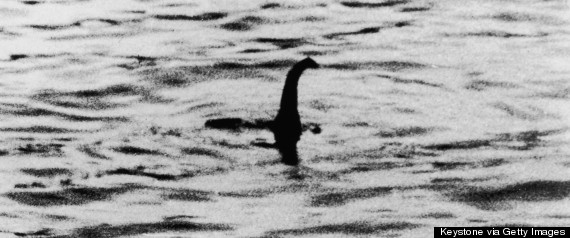
Though most of Nessie's portraits have been debunked as elaborate hoaxes, that hasn't stopped the curious from seeking her out. In 1969, a submarine scoured the depths of Loch Ness on a trip sponsored by the World Book Encyclopedia to try to locate the beast.
Unfortunately, those searching came up empty-handed.
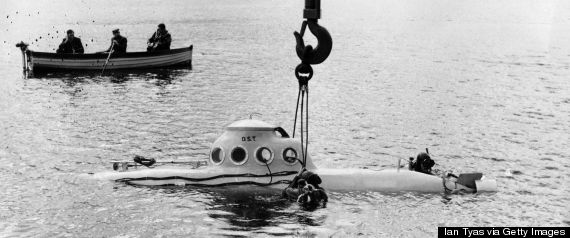
More recently, Loch Ness monster enthusiasts who are part of the Official Loch Ness Monster Fan Club said that they found an image of the creature on Apple Maps. However, skeptics argued that the image was no more than the wake left behind by a boat.
The tales of the Loch Ness monster have spawned a booming tourist economy in Scotland. People can take cruises around Loch Ness, visit a museum dedicated to the monster, go to an amusement park called Nessieland, and buy every imaginable variety of Nessie souvenirs.
Puerto Rico
The chupacabra, Spanish for goat sucker, was first reported in 1995 in Puerto Rico, when eight sheep were found dead and drained of their blood, according to CNN. Sightings also have been reported in Texas, Maine, Minnesota, Missouri, Mississippi, Borneo and Vietnam.
While reports from Puerto Rico said the creature was a 3-foot tall cryptid that walks upright, it is now typically described as a four-legged animal.
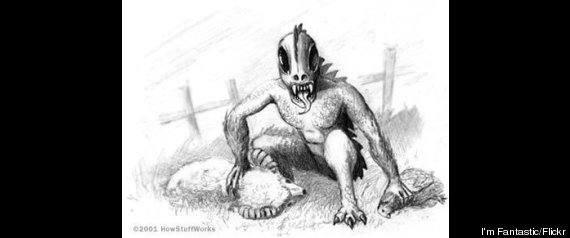 An artist's rendering of the chupacabra. (I'm Fantastic/Flickr)
An artist's rendering of the chupacabra. (I'm Fantastic/Flickr)
On several occasions, alleged chupacabras have been caught. Pictured here, Texas resident Phylis Canion found what she believed to be a dead chupacabra on her property in 2007.

But according to National Geographic, scientists have used a combination of DNA sequencing and evolutionary theory to determine that alleged chupacabras are really just coyotes suffering from mange, a skin disease caused by parasitic mites that makes mammals lose their fur.
Tanzania
Popo Bawa, which means "bat wing" in Swahili, is a demonic creature of Tanzanian origin. Reports of Popo Bawa first began in Pemba, an island off the coast of Tanzania, but tales of the creature quickly spread to Zanzibar and have, on occasion, reached the mainland.
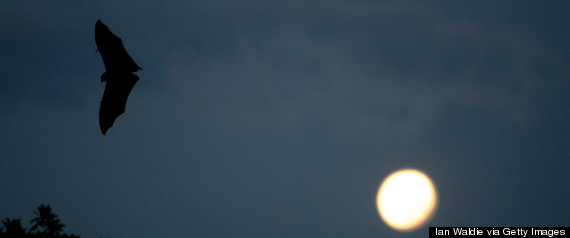
According to a BBC report on alleged attacks in Tanzania's capital, Popo Bawa transforms himself from a bat into a man at night and sexually attacks sleeping victims. While the majority of his victims are reportedly men, women claim to have been targeted as well.
In 2001, a string of alleged attacks led to such widespread panic in Zanzibar that many residents chose to sleep outside of their homes, believing the demon only strikes those who are in the comfort of their own beds, the BBC reported.
In 2008, the reality show "Destination Truth" on the Syfy channel made the Popo Bawa the center of one of its investigations. According to a report on the channel's website, "skeptics insist that reports of such attacks are more likely nightmares brought on by episodes of sleep paralysis."
New Jersey, USA
With the head of a goat, the wings of a bat, the legs of a horse and the stature of a kangaroo, this creature of legend seems more like it's from a comic book than a horror film. In fact, the Jersey Devil has become more famous in U.S. pop culture than it has for any acts of terrorizing.
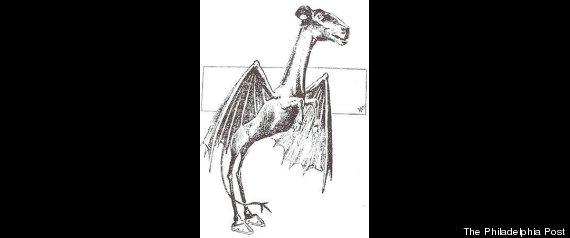 An artist's rendering of the Jersey Devil, which first appeared in The Philadelphia Post in 1909.
An artist's rendering of the Jersey Devil, which first appeared in The Philadelphia Post in 1909.
The creature has made appearances on "The X-Files," in a Bruce Springsteen song, and is getting its own PlayStation video game. New Jersey's NHL team even uses the creepy cryptid for its team name.
Still, what is fun folklore for some is serious business for others. A group called The Devil Hunters bills itself as "The Official Researchers Of The Jersey Devil" and has a website dedicated to chronicling all encounters with the beast.
Europe
Iceland isn't the only country to reconsider road construction for the sake of magical beings. According to a 1999 article in The New York Times, the Irish stopped construction on a highway because it required bulldozing a hawthorn bush -- believed to be a favorite meeting place for fairies.
"If they bulldoze the bush to make way for a planned highway bypass, the fairies will come. To curse the road and all who use it, to make brakes fail and cars crash, to wreak the kind of mischief fairies are famous for when they are angry, which is often," Irishman Eddie Lenihan warned local officials at the time.
Some believe that disturbing a fairy fort can result in serious trouble, such as unleashing the ancient curse of Tara, which believers have pointed to as the cause for everything from power outages to death.
Beliefs in fairies are hardly contained to Ireland. In 1917, Elsie Wright and Frances Griffiths, two young English cousins, caused an international stir when they claimed to have photographed fairies in their backyard.
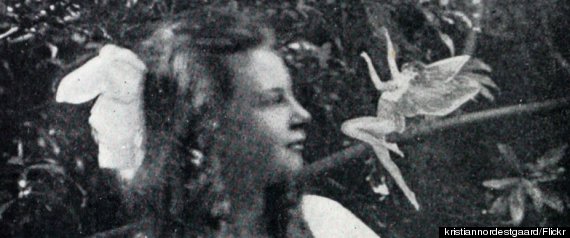 Frances Griffiths poses with an alleged fairy. (kristiannordestgaard/Flickr)
Frances Griffiths poses with an alleged fairy. (kristiannordestgaard/Flickr)
Later in life, they admitted that four of the five photographs were fake, but insisted until their deaths that the fifth was real.
Congo
Many early explorers of the Congo Basin wrote about an other-worldly beast they observed or heard tales of during their travels. With a long neck and an elephantine body, the creature has been described as a water-dwelling monster that looks like a sauropaud dinosaur, according to National Geographic. It is known as Mokole Mbembe in the Likouala region of the Congo, which is said to be its home.
 An illustration of a sauropod dinosaur.
An illustration of a sauropod dinosaur.
To date, there have been more than 50 expeditions to try and figure out whether the creature is the last living species of the dinosaur. Thus far, researchers have come up empty-handed.
However, according to the BBC, 80 percent of the Likouala region of the Congo has yet to be charted. That's 66,000 square kilometers of unexplored terrain.
"I'd put Mokele-mbembe in the same category as the Loch Ness Monster," Bill Laurance, a professor at James Cook University in Australia, told the BBC. "My gut sense is that the likelihood of the creature actually existing today is small. However, one thing you learn early on in science is never say never. We are still discovering new species all the time."
